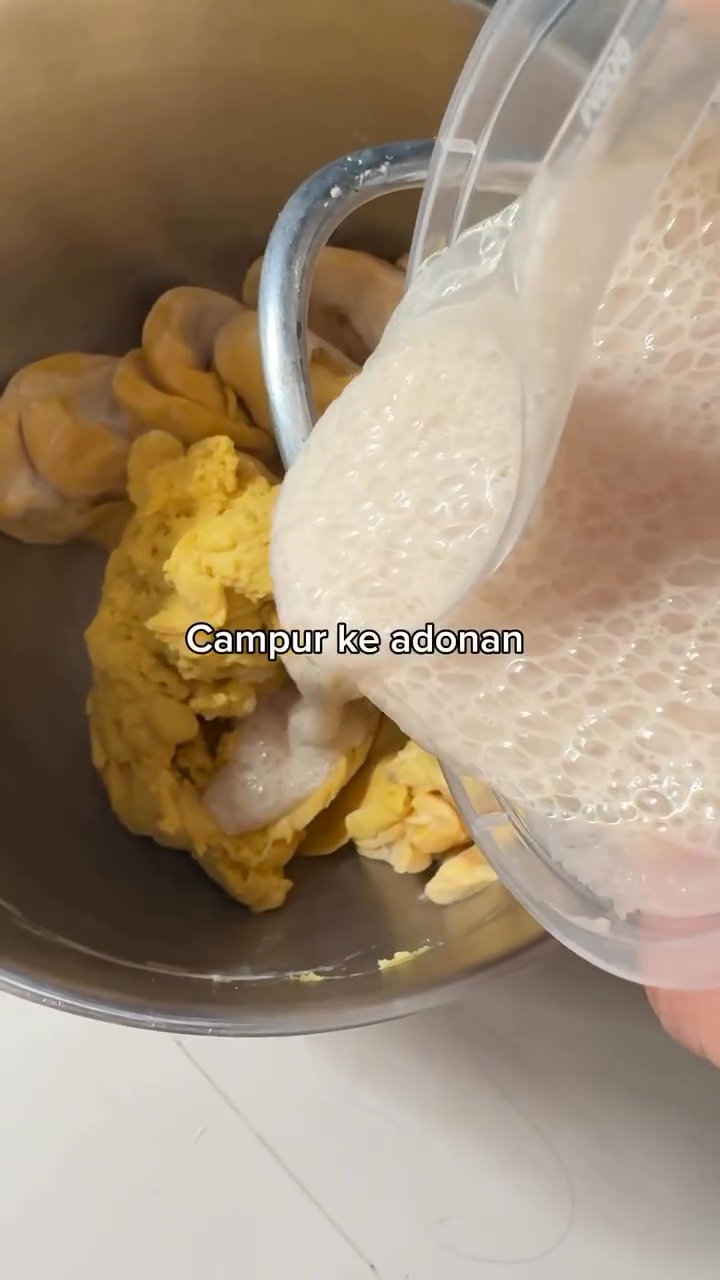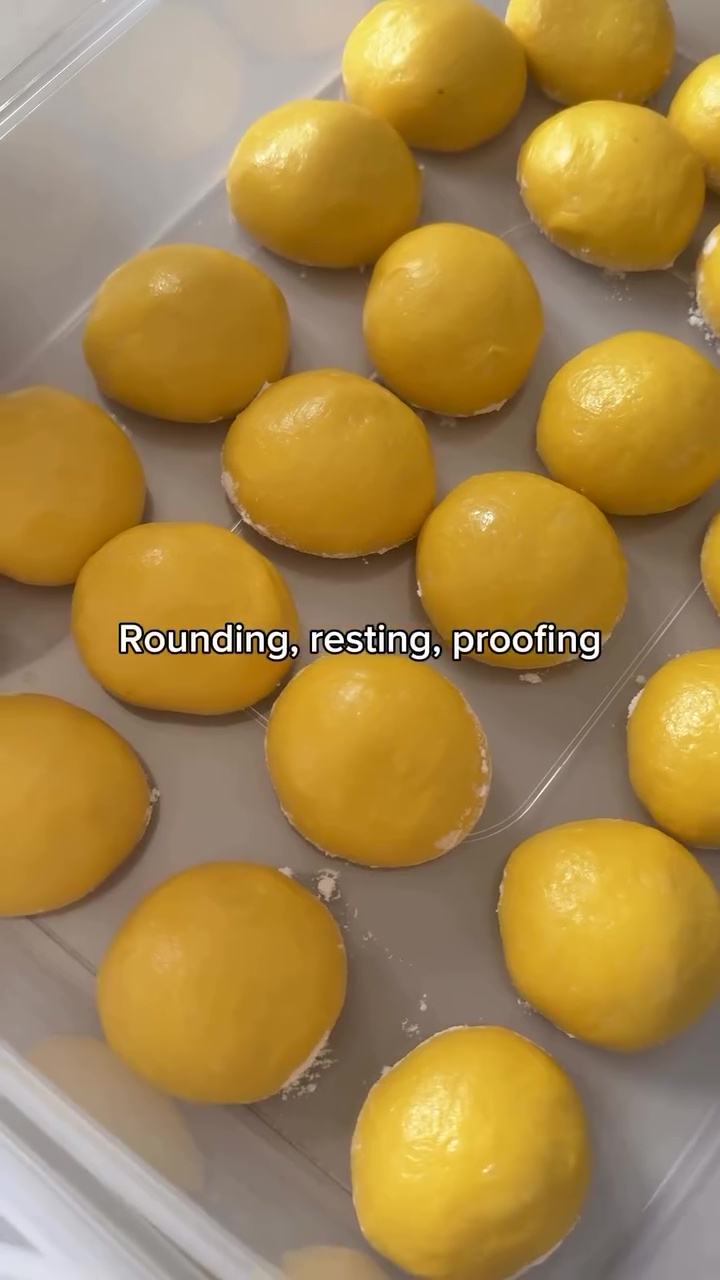photo: Instagram/@anggiwulansarihrp
Brilio.net – The proofing process is one of the crucial stages in making donuts. This stage functions to make the dough rise perfectly before frying, resulting in a soft and light texture when eaten. Usually, the dough is left to rest at a certain temperature so that the yeast can work optimally and produce air bubbles that make the donuts “alive”.
However, not all proofing processes run smoothly. There are times when the dough fails to rise due to various factors, ranging from yeast that is no longer active, the room temperature is too cold, to the incorrect fermentation time. As a result, the dough remains dense and not flexible even though it has been left for a long time.
When proofing fails, many people still try to fry them in the hope that the donuts will still rise in the hot oil. Unfortunately, that rarely works. Donuts that fail to proof will usually be dense, hard, and lose the soft taste typical of ideal donuts. As a result, the dough is often left alone because it is useless if it is forced to fry.
However, instead of frying it straight away, donuts that fail to rise can still be repaired, you know. An Instagram user @anggiwulansarihrp once revealed a practical trick to make dense donuts more fluffy.
To find out more, see the tutorial provided BrilioFood summarized from Instagram @anggiwulansarihrp on Friday (17/10).
Practical tricks to turn flat donuts into fluffy ones.
1. Prepare new yeast and activate it first.

Photo; Instagram/@anggiwulansarihrp
If your donuts are sticky, it’s likely that the yeast is weak or dead. So, the first step is to prepare fresh and active yeast.
Mix the yeast with a little warm water (not hot, it will kill it) and a little sugar, then leave it for 10 minutes until it foams — a sign the yeast is ready to use. After that, mix the donut dough again with new dough so that the texture can be “alive” again.
2. Pour the activated yeast into the dough.

Photo; Instagram/@anggiwulansarihrp
Once the yeast is completely foamy, pour it into the old and new dough mixture. This process helps “turn on” the gluten and gives a new fermentation boost so the dough can rise. Make sure you stir it thoroughly before starting the mixer, so that the yeast is evenly distributed throughout the mixture.
3. Mix the dough until it is smooth and looks glowing.

Photo; Instagram/@anggiwulansarihrp
Use a mixer with a dough hook (or you can knead manually if you are strong). Knead until the dough feels smooth and elastic, this means that when pulled it doesn’t tear easily and looks a little shiny. This part is important because properly formed gluten will hold in the air resulting from fermentation, making the donuts soft and tender after frying.
4. Shape the dough into a round shape and do the rounding.

Photo; Instagram/@anggiwulansarihrp
Once the dough is ready, take a little at a time and shape it into small balls according to the desired donut size. Carry out the rounding process, namely rolling the dough with the palm of your hand so that the surface is smooth and taut. After that, let it sit for a while (resting) so that the dough relaxes and it’s easy to form a hole later.
5. Proof again for 2 hours until fully expanded.

Photo; Instagram/@anggiwulansarihrp
This stage cannot be missed! Cover the dough with a clean cloth and let it rest in a warm place for about 2 hours.
This re-proofing process will make the donuts rise perfectly as if they had just been made from scratch. After that, you can immediately fry the donuts in fairly hot oil — the results will be soft, tender, and far from sticky.
FAQ about tips so that donuts don’t get stuck.
Donuts that are soft and perfectly risen are certainly the dream of many people. But often the results are difficult and harsh. Here are some frequently asked questions about how to prevent donuts from turning sour, complete with practical and easy-to-understand answers.
1. Does the type of flour affect the texture of the donut?
Yes, very influential. Use high protein flour or a mixture of high and medium protein so that the dough is more elastic and can hold the air resulting from fermentation. If you only use low protein flour, the results will be denser and the donuts will tend to be dense.
2. Why do my donuts have been proofed but they still don’t rise when fried?
Most likely the proofing was too short or the place was too cold. The dough needs warm temperatures and enough time for the yeast to work well. Apart from that, oil temperature that is too hot can also “kill” the air bubbles in the dough when it starts frying.
3. Can too much sugar make the donuts sticky?
Yes, because too much sugar can absorb liquid and inhibit the yeast from working. As a result, fermentation is slow and the donuts cannot rise completely. It’s best to follow the recipe measurements or reduce the sugar a little if your dough feels heavy when kneading.
4. What effect does kneading have on the donut results?
Kneading determines the formation of gluten — an important part of what makes donuts chewy and tender. If the dough is not yet smooth and is still soft, the air from fermentation will not be retained and the donut will become flat. So make sure the dough is smooth and elastic before entering the proofing stage.
5. Can yeast fail to work even after just opening it?
It’s possible, especially if the yeast was stored in a damp place or has expired. Before use, activate it with warm water and a little sugar to make sure it is still alive. If no foam appears after 10 minutes, you should not use it because it is no longer active.
(brl/is)
News
Berita
News Flash
Blog
Technology
Sports
Sport
Football
Tips
Finance
Berita Terkini
Berita Terbaru
Berita Kekinian
News
Berita Terkini
Olahraga
Pasang Internet Myrepublic
Jasa Import China
Jasa Import Door to Door
Comments are closed, but trackbacks and pingbacks are open.